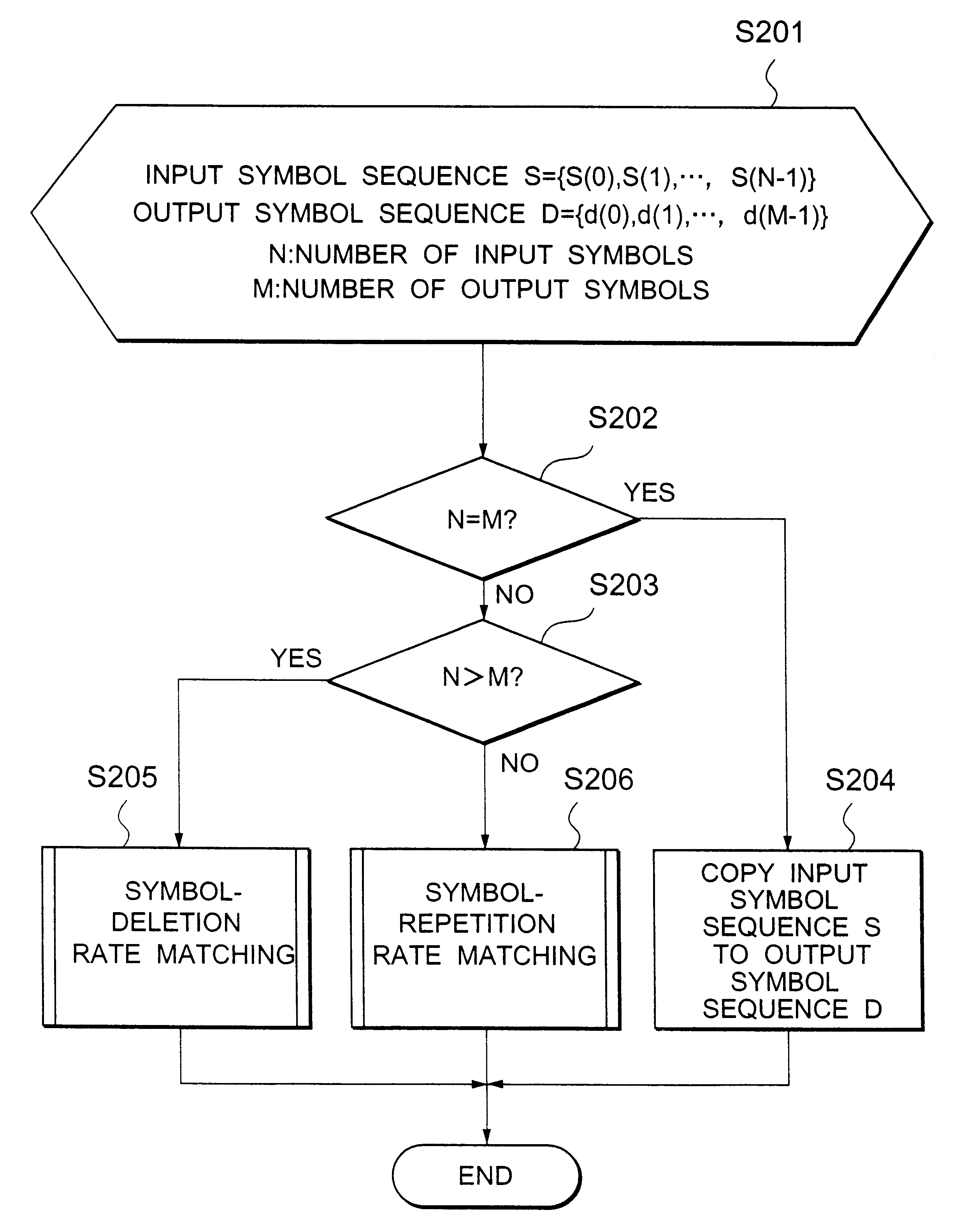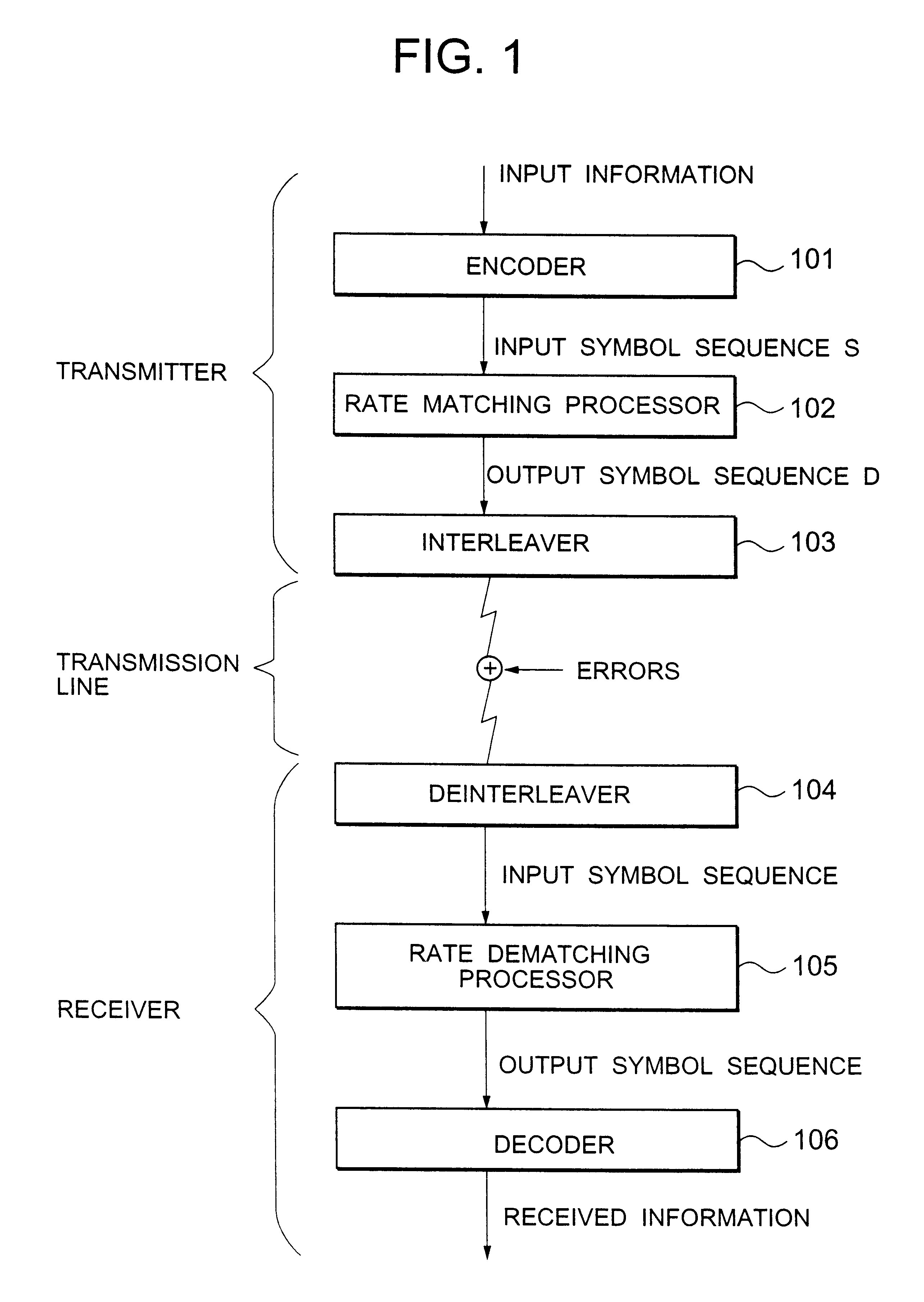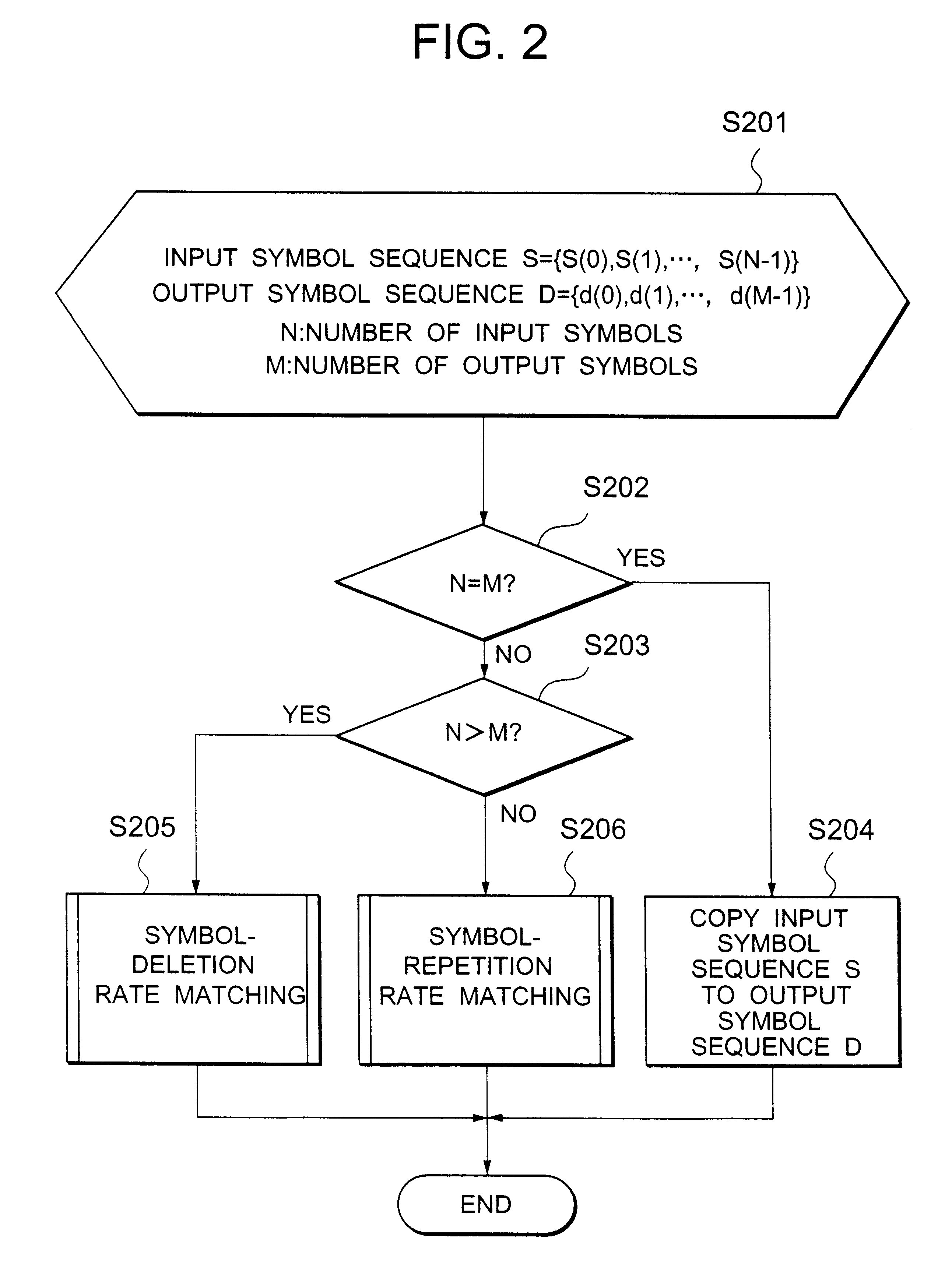Rate matching method
a rate matching and rate technology, applied in the field of digital communication systems, can solve the problems of reducing the error rate of symbols more than the constraint length away from the symbol, many decoding systems are susceptible to an error burst, and cannot fully exhibit the error correction capability
- Summary
- Abstract
- Description
- Claims
- Application Information
AI Technical Summary
Benefits of technology
Problems solved by technology
Method used
Image
Examples
example 1-1
Symbol Deletion
Referring to FIG. 6, in the case of q=2, N=128 and M=100, the step S307 is performed when R is not identical to 2 and, only when R=2, the step S307 is skipped. In other words, as shown in FIG. 6, the 28 symbols included in the row of R=2 are not copied, resulting in the output symbol string D={1, 2, 4, 5, 6, 7, 9, 10, 11, 12, 14, 15, . . . , 125, 126, 128}. The symbols of any row can be deleted by selecting the corresponding value of q.
example 1-2
Symbol Deletion
Another way may be used to delete N-M symbols. The same advantage can be obtained by determining the distance of a symbol from the bottom symbol for each column. More specifically, the distance (p) of a symbol from the bottom symbol is selected from {0, 1, 2, 3}. Thereafter, by comparing R and p for earn C, it is determined whether the corresponding symbol should be copied, in other words, the step S307 of FIG. 3 should be skipped.
Referring to FIG. 7A, in the case of p=0, the respective last symbols of the columns {5, 10, 14, 19, 23, 28, . . . , 115, 119, 124, 128} are deleted from the input symbol string S.
Referring to FIG. 7B, in the case of p-2, the respective last-but-two symbols of the columns {3, 8, 12, 17, 21, 26, . . . , 113, 117, 122, 126} are deleted from the input symbol string S.
As described above, according to the present embodiment, the narrowest interval and the widest interval between deleted symbols are almost the same. Precisely, the narrowest interv...
example 1-3
Symbol Repetition
Referring to FIG. 8, in the case of q=2, N=128 and M=156, the step S410 is performed only when R is identical to 2 and, when R is not identical to 2, the step S410 is skipped. In other words, as shown in FIG. 8, only the 28 symbols included in the row of R-2 are copied, resulting in the output symbol string D-{1, 2, 3, 3, 4, 5, 6, 7, 8, 8, 9, 10, 11, 12, 13, 13, 14, 15, . . . , 125, 126, 127, 127, 128}. The symbols of any row can be repeated by selecting the corresponding value of q.
PUM
 Login to View More
Login to View More Abstract
Description
Claims
Application Information
 Login to View More
Login to View More - R&D
- Intellectual Property
- Life Sciences
- Materials
- Tech Scout
- Unparalleled Data Quality
- Higher Quality Content
- 60% Fewer Hallucinations
Browse by: Latest US Patents, China's latest patents, Technical Efficacy Thesaurus, Application Domain, Technology Topic, Popular Technical Reports.
© 2025 PatSnap. All rights reserved.Legal|Privacy policy|Modern Slavery Act Transparency Statement|Sitemap|About US| Contact US: help@patsnap.com



